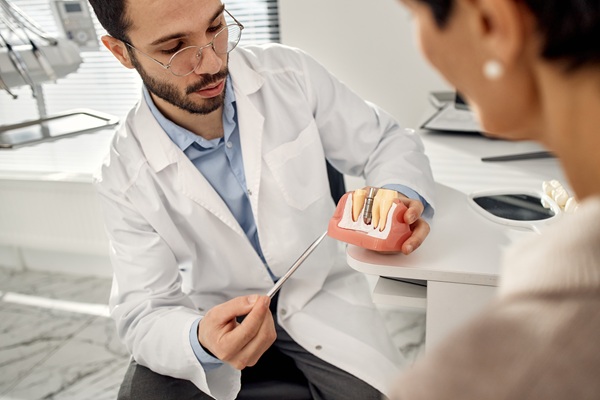How Teeth Whitening Treatments Work
 Teeth whitening treatments get you whiter teeth in as little as 60 minutes. These treatments are performed under the supervision of a dentist, and the American Academy for Cosmetic Dentistry states a treatment session can improve the color of a person’s teeth by up to eight shades.
Teeth whitening treatments get you whiter teeth in as little as 60 minutes. These treatments are performed under the supervision of a dentist, and the American Academy for Cosmetic Dentistry states a treatment session can improve the color of a person’s teeth by up to eight shades.
Over-the-counter teeth whitening alternatives typically provide a cheaper alternative, but these products are not as highly concentrated as the products used by dentists. OTC whitening products are also more likely to contain abrasive ingredients that can damage teeth enamel.
The active ingredient in most teeth whitening products is often hydrogen peroxide or hydrogen carbamide. These chemicals can penetrate teeth enamel, removing stains from the inner and outer layers of teeth.
Whitening treatments are typically administered with a custom mouth tray. The tray is made from an impression of the patient’s teeth that is sent to a dental lab where oral appliances are made. The tray helps to keep the whitening product from getting to gum tissues and causing irritation. Dentists typically recommend targeting a shade of white that is no more than a few shades lighter than the white of the patient’s eye, so the results of the person’s whitening treatments look natural.
What to expect when getting teeth whitening treatments
Teeth whitening treatments are a non-invasive treatment that usually does not lead to significant side effects – besides increased teeth sensitivity for a few days – when done properly. Here is what the process looks like:
- The dentist starts the process by recording the starting shade of the patient’s teeth.
- The patient’s teeth are polished with a grainy material known as pumice to get rid of any plaque left on teeth surfaces.
- Gauze will be strategically placed in the patient’s mouth to keep their teeth dry during the whitening process.
- Other barriers might be placed along the patient’s gumline to protect gum tissue.
- The whitening product is poured into the mouth tray and the patient is asked to bite down on it. In some cases, the whitening product might be coated directly on the patient’s teeth.
- The patient is asked to bite down on the mouth tray for 60 to 90 minutes. A laser can be used to speed up the process.
- Once the ideal shade of white has been reached or the maximum time allowed for a whitening session has been reached, any mouth tray used is removed, and the product is rinsed off the patient’s mouth.
- A fluoride treatment may be performed to help reduce the risk of teeth sensitivity as a result of the whitening treatment.
Many patients are happy with the color of their teeth after a single teeth whitening session, but others might need additional treatments to get their teeth to the desired shade of white. Patients are advised to avoid color-rich foods like beets, pasta sauce, and coffee for at least 24 hours after their treatment to prevent discoloration while the new color sets.
Get your teeth whitened
Ready for a white smile? Call or visit our Kennewick clinic to learn more about how our dentist can improve the color of your teeth with whitening treatments.
Request an appointment or call Gledhill Dental at 509-800-8410 for an appointment in our Kennewick office.
Related Posts
You might be considering choosing either a take-home teeth whitening kit or having a dentist perform the in-chair procedure. The results will depend on the treatment you choose. They also depend on the degree of dental staining you have. If you want to know which teeth whitening procedure you should get, here are the details.Brown…
Teeth whitening treatments are the fastest way to significantly improve the color of teeth, and the results can last for years depending on how well the person takes care of their mouth. These treatments are performed using chemicals with bleaching properties like hydrogen carbamide and hydrogen peroxide.The bleaching agents can remove stains from the outer…
A dentist recommends teeth whitening for patients that have mild to moderate teeth stains. They use a peroxide bleach that can safely target and remove stains on visible front teeth, improving the color and shade of your smile. The following is a discussion of professional teeth whitening and how to determine if treatment is right…


